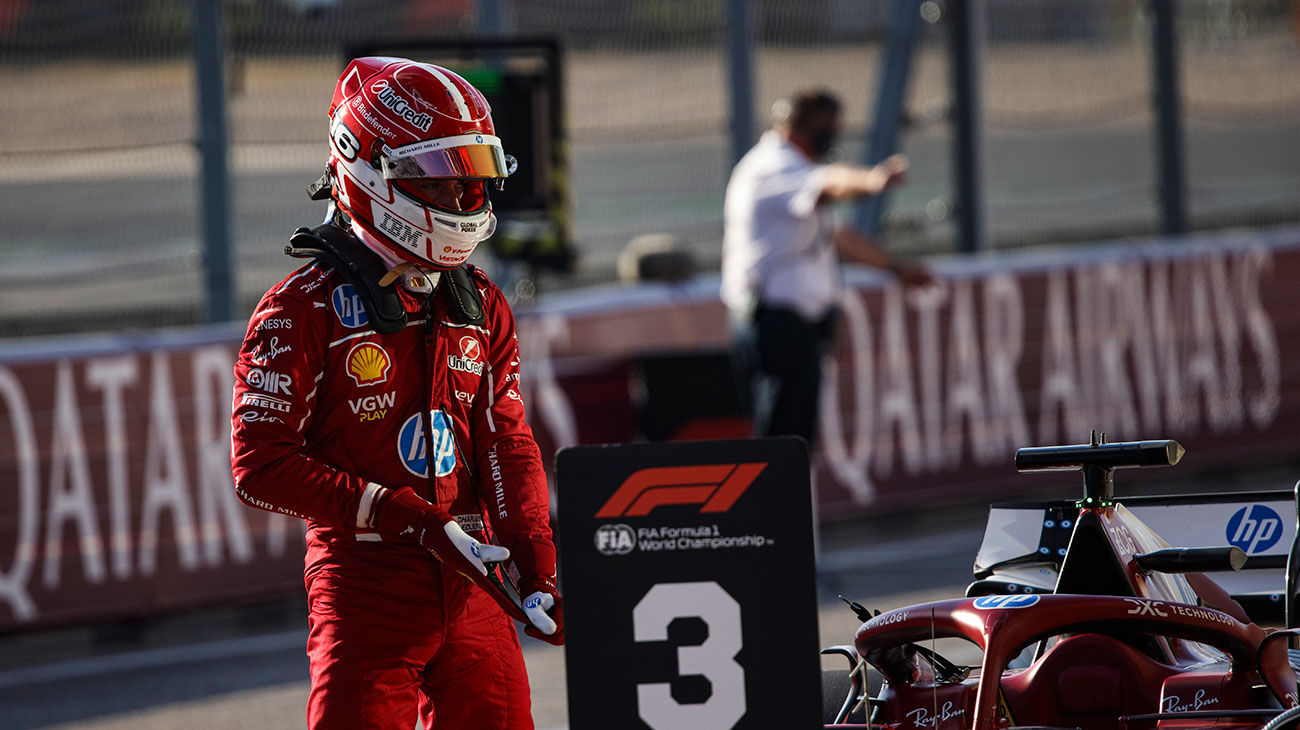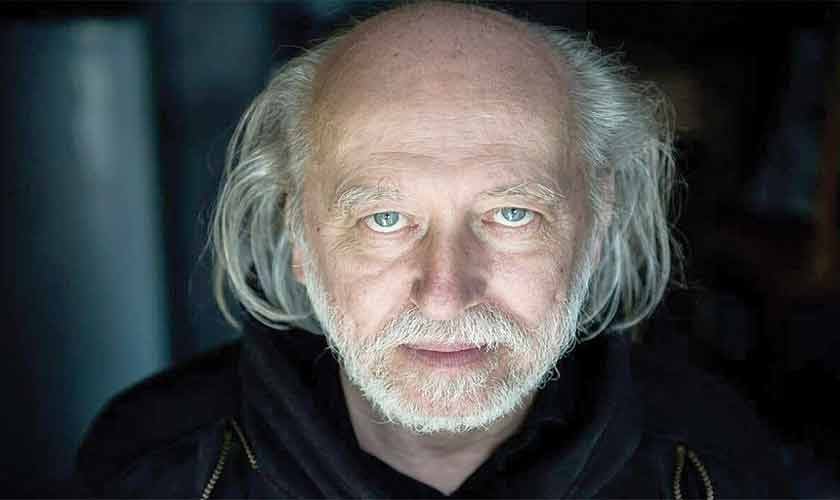Sprint Race
• Scuderia Ferrari HP drivers Lewis Hamilton and Charles Leclerc finished the Sprint Race in fourth and fifth places respectively.
• After the start, there was a multiple collision at the first corner that took out…

Sprint Race
• Scuderia Ferrari HP drivers Lewis Hamilton and Charles Leclerc finished the Sprint Race in fourth and fifth places respectively.
• After the start, there was a multiple collision at the first corner that took out…

ceptics assume that the Swedish Academy relies on confidentiality to bolster its reputation. Fuelled by the spirit of secrecy, the Nobel Committee’s decisions are seldom the subject of transparent discussions and…

From Max Verstappen taking further points out of the McLarens to a first corner that seems to attract drama, and from Ferrari in the fight to repeat last year’s victory to track limit violations that can impact the final result, here are five…

Max Verstappen has seized pole position for the United States Grand Prix, the Dutchman’s initial lap in Q3 proving enough to secure him the top spot after running out of time to put in a second effort.
Having set the pace through Q1 and Q2,…

Dyson Purifier Cool PC1 – TP11.

Samsung’s new Windfree Cassette AC.

Nikon ZR series compact camera.

FreeBSD 15.0 Beta 2 is out as the newest weekly test release of FreeBSD working its way toward a stable release in early December.
Similar to prior development builds of FreeBSD 15.0 improving their release build process, FreeBSD 15.0 Beta 2…

Charles Leclerc was surprised by Ferrari’s pace in Qualifying at the United States Grand Prix, as he and team mate Lewis Hamilton secured third and fifth places for Sunday’s race.
Ferrari had struggled for pace in Austin prior to Qualifying,…

The TROP2-targeted antibody-drug conjugate (ADC) sacituzumab tirumotecan (sac-TMT; SKB264; MK-2870) yielded superior progression-free survival (PFS) compared with chemotherapy in patients with previously treated, locally advanced or metastatic hormone receptor (HR)-positive (+), HER2-negative (–) breast cancer, according to updated findings from the phase 3 OptiTROP-Breast02 trial (NCT06081959), presented at the 2025 ESMO Congress.1
Notably, sac-TMT elicited a 65% reduction in the risk of disease progression or death vs chemotherapy (HR, 0.35; 95% CI, 0.26-0.48; P <.0001) and showed a consistent benefit across subgroups. At a median follow-up of 7.4 months, the median PFS (mPFS) in patients receiving sac-TMT (8.3 months; 95% CI, 7.0-8.6) was approximately twice that of patients receiving chemotherapy (4.1 months; 95% CI, 3.0-4.3).
Additionally, an interim analysis of overall survival (OS) revealed a positive trend among those receiving sac-TMT compared to those receiving chemotherapy (HR, 0.33; 95% CI, 0.18-0.61).
“The current chemotherapy options [for HR+/HER2– breast cancer] show limited efficacy,” said Man Li, professor at the Second Affiliated Hospital of Dalian Medical University, during the presentation.1 “Sac-TMT has shown promising activity in pretreated patients with HR+/HER2– metastatic breast cancer in [a] phase 2 study [NCT04152499].”
These new statistically significant and clinically meaningful efficacy data from OptiTROP-Breast02, along with an observed manageable safety profile, strengthen the case for sac-TMT as a potential new treatment option for this patient population who comprise a vast majority of global breast cancer cases.1
“The OptiTROP-Breast02 study supports sac-TMT as a new treatment option for patients with HR+/HER2– breast cancer following endocrine-based therapy and chemotherapy,” said Li.
OptiTROP-Breast02 is a global, randomized, open-label study evaluating the efficacy and safety of sac-TMT vs investigator’s choice of chemotherapy (ICC) in adult patients with unresectable, locally advanced or metastatic HR+/HER2– breast cancer who had failed at least 1 line of systemic chemotherapy.2 The study is assessing the primary end point of PFS, along with secondary end points of investigator-assessed OS, objective response rate, disease control rate, and duration of response.
Patients were eligible for participation if they had HR+/HER2– breast cancer, had between 1 and 4 lines of chemotherapy, and had at least 1 endocrine therapy, CDK 4/6 inhibitor, and taxane in any setting. Of 399 patients randomized 1:1 to either the investigational arm (n = 200) or control arm (n = 199), 200 received 5 mg/kg of intravenous sac-TMT every 2 weeks, while 196 received ICC including eribulin, capecitabine, gemcitabine, and vinorelbine.
Patient characteristics were well balanced between the study arms. Across both arms, the median age was 54 years (range, 31-74), two-thirds had an ECOG performance status of 1, about 53% were HER2 zero, and 47% were HER2 low. About 96% of patients had visceral metastases and over three-fourths had liver metastases. About three-fourths of patients had received neoadjuvant chemotherapy and all patients had received prior taxane, endocrine therapy, and a CDK 4/6 inhibitor. About 56% of patients had received at least 2 lines of chemotherapy in the advanced/metastatic setting and a little over one-fourth of patients had primary endocrine resistance.
This most recent report of safety data revealed a manageable safety profile, with no new safety signals. In terms of treatment-related adverse events (TRAEs), the incidence of all-grade and grade ≥3 TRAEs was comparable between investigational and control arms. The most common TRAEs for both sac-TMT and chemotherapy were hematologic toxicities, including decreased white blood cell count, anemia, and neutropenia. While stomatitis was more frequent in patients receiving sac-TMT (63% vs 8%), Li noted that these events were primarily low-grade and manageable.
Treatment discontinuation occurred in 87 and 138 patients in the investigational and control arms, respectively. The most common reason for discontinuation was radiographic disease progression in both the investigational arm (n = 80) and control arm (n = 122).
Regarding next steps Li said, “Phase 3 studies of sac-TMT as a monotherapy and/or in combination with pembrolizumab (Keytruda) in patients with chemotherapy-naïve HR+/HER2– breast cancer are ongoing globally (NCT06312176) and in China (NCT07071337).”
DISCLOSURES: Li had no interests to declare pertaining to this presentation.
REFERENCES: